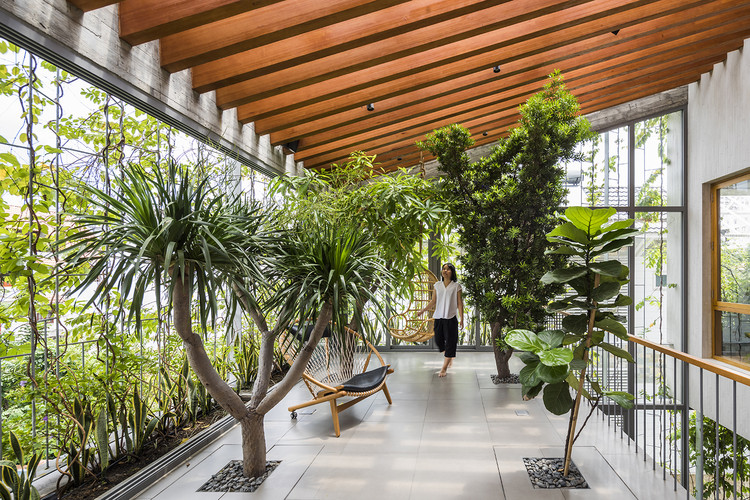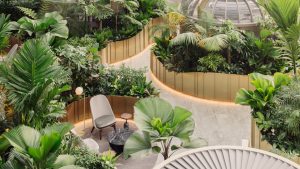- 16 October 2023
- 103
Living in Harmony: Real Estate’s Evolution with Biophilic Design

Introduction
In an increasingly urbanized world, the real estate industry is undergoing a profound transformation by embracing the concept of biophilic design. This evolution seeks to create living spaces that foster harmony with nature, resulting in improved well-being for residents. In this article, we will delve into the ever-evolving relationship between real estate and biophilic design, exploring how the integration of nature enhances our lives. Learn about key biophilic design principles, and find inspiration in a comparative table showcasing properties that have fully embraced this holistic approach.
The Essence of Biophilic Design
Biophilic design is not just a trend; it’s a revolution in the way we interact with our living spaces. It’s the art of weaving nature into our built environments, making our homes more than just structures but places of sanctuary, vitality, and inspiration.
The 6 Principles of Biophilic Design
- Visual Connection with Nature: Large windows, open spaces, and abundant greenery create a visual connection with nature, grounding us in the natural world.
- Non-Visual Connection with Nature: Incorporating nature’s sounds, textures, and scents in design enhances our sensory experiences and emotional connection.
- Non-Rhythmic Sensory Stimuli: Nature’s irregular patterns and textures, such as the grain of wood or the rustling of leaves, reduce stress and promote tranquility.
- Thermal and Airflow Variability: Natural variations in temperature and air movement, such as a gentle breeze or warm sunlight, create a more comfortable living space.
- Presence of Water: Water features, from fountains to ponds, provide a sense of calm, and the sound of flowing water can be soothing.
- Dynamic and Diffuse Light: Natural light that changes throughout the day, and is diffused through greenery, mimics the outdoors and positively affects our mood.
Image by: https://frameweb.com/
Comparative Table of Biophilic Design in Real Estate
Discover how real estate properties have embraced biophilic design principles in the following comparative table:
| Property | Location | Key Biophilic Features |
|---|---|---|
| Serene Oasis Residences | San Francisco, CA | Atrium garden, living walls, natural stone accents |
| Waterside Retreat | Miami, FL | Waterfront views, botanical gardens, open-air verandas |
| Urban Eden Apartments | New York, NY | Biophilic artwork, floor-to-ceiling windows, reclaimed wood details |
| Coastal Harmony Homes | Malibu, CA | Beachfront access, outdoor showers, sustainable landscaping |
| Tranquil Woods Estate | Seattle, WA | Forest proximity, earthy color palette, nature-inspired artwork |
The Impact on Well-Being
The integration of biophilic design principles has a profound impact on the well-being of residents. Studies have consistently shown that exposure to nature in the built environment can reduce stress, improve cognitive function, and enhance overall satisfaction with living spaces. This evolution in real estate is a testament to the transformative power of nature in promoting physical and mental health.
Real Estate’s Commitment to Harmony
Real estate is no longer just about providing shelter; it’s about creating spaces where we can truly thrive. Biophilic design is the manifestation of this commitment, where living in harmony with nature enhances our quality of life. As the industry continues to embrace these principles, it is opening doors to a more balanced, well-connected future, where the beauty and serenity of the natural world are seamlessly integrated into our everyday lives.
Conclusion
The real estate industry’s evolution with biophilic design is a testament to its commitment to harmony and well-being. By embracing the natural world in our living spaces, we are fostering a deeper connection with nature and creating environments that enhance our physical and emotional well-being. Biophilic design principles, whether through visual or non-visual connections with nature, have a profound impact on reducing stress, enhancing cognitive function, and increasing our overall satisfaction with our living spaces. This shift in the real estate industry is paving the way for a future where our homes and living spaces seamlessly integrate the beauty and serenity of the natural world.


